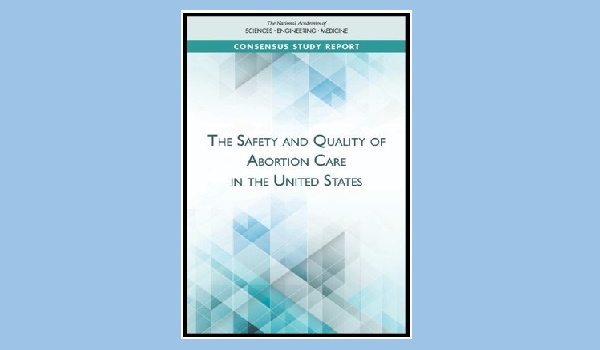
Report Highlights (PDF)
This says that a great deal of scientific research has been conducted on the safety and quality of abortion services in the United States in the decades since national legalization.
With support from six private foundations, the National Academies of Sciences, Engineering, and Medicine convened a committee to examine the available evidence on the safety and quality of different abortion methods, health facilities, and types of clinicians as well as the potential physical and mental health impacts on women. The resulting report provides a comprehensive review of the state of the science.
Women in the USA who have abortions are disproportionately low-income. Almost half have family incomes below the federal poverty level.
Four types of abortions are used; the vast majority of abortions are by either medication or aspiration methods. Most abortions are performed early in pregnancy – 50% by 7 weeks’ gestation and 90% by 12 weeks’ gestation – and length of gestation is the primary factor in deciding what abortion procedure is the most appropriate. Medication abortions are up to 10 weeks’ gestation; aspiration procedures may be used up to 14 to 16 weeks’ gestation. When these are no longer feasible, dilation and evacuation (D&E) and induction methods are used.
Abortion Care and the Six Attributes of Quality Health Care (PDF)
The report described the six main attributes of quality health care for abortion:
> safety – avoiding injuries to patients from the care that is intended to help them,
> effectiveness – providing services based on scientific knowledge to all who could benefit and refraining from providing services to those not likely to benefit – avoiding underuse and overuse respectively,
> patient-centredness – providing care that is respectful of and responsive to individual patient preferences, needs and values, and ensuring that patient values guide all clinical decisions,
> timeliness – reducing waits and sometimes harmful delays for both those who receive and those who give care,
> efficiency – avoiding waste, including waste of equipment, supplies, ideas, and energy,
and
> equity – providing care that does not vary in quality because of personal characteristics such as gender, ethnicity, geographic location, and socioeconomic status.
Press release (HTML)
This says the quality of abortion care in the USA depends on where a woman lives. Abortion-specific regulations in many states create barriers to safe and effective care. These regulations may prohibit qualified providers from performing abortions, misinform women of the risks of the procedures they are considering, or require medically unnecessary services and delay care.
The vast majority of abortions can be provided safely in office-based settings, the report says. In 2014, 95% of abortions were provided in clinics and other office-based settings.
The committee reviewed the evidence on clinical skills needed and concluded that trained physicians – such as OB-GYNs and family medicine physicians – as well as advanced practice clinicians, such as certified nurse-midwives, nurse practitioners, and physician assistants – can safely and effectively provide medication and aspiration abortions. Physicians with appropriate training and sufficient experience to maintain requisite surgical skills can provide D&E abortions. Clinicians with training in managing labour and delivery can safely and effectively provide induction abortions.



